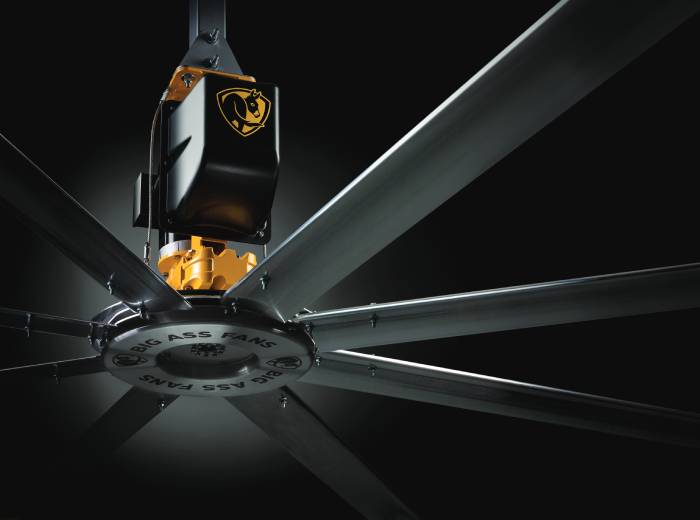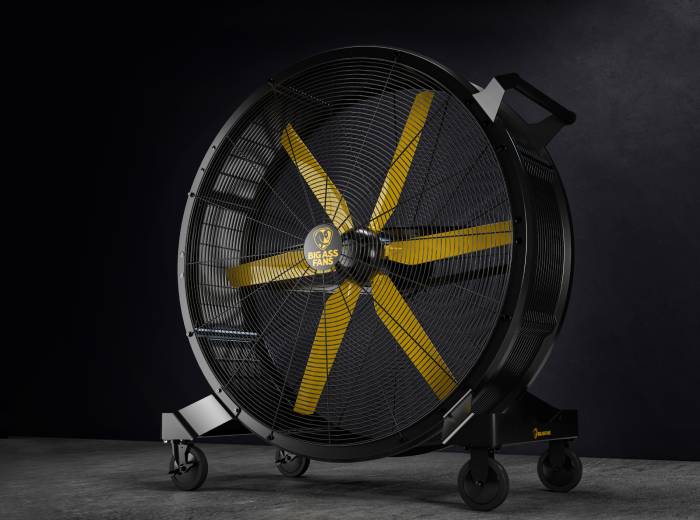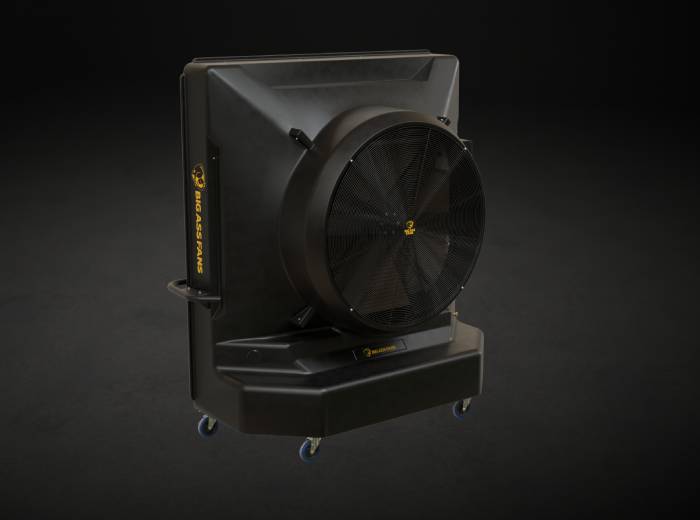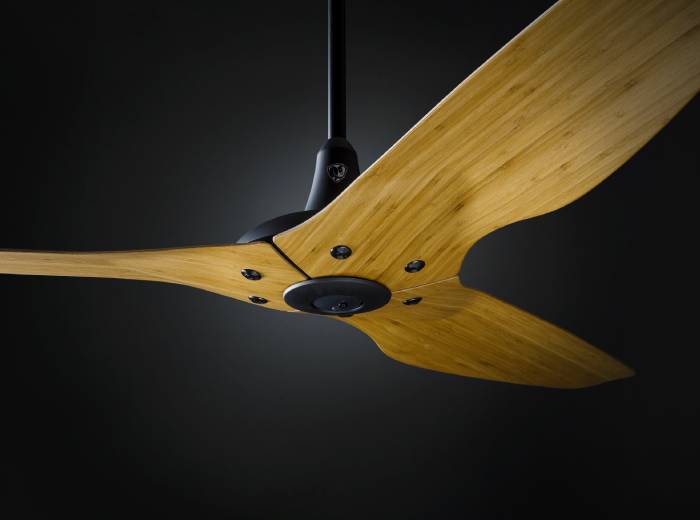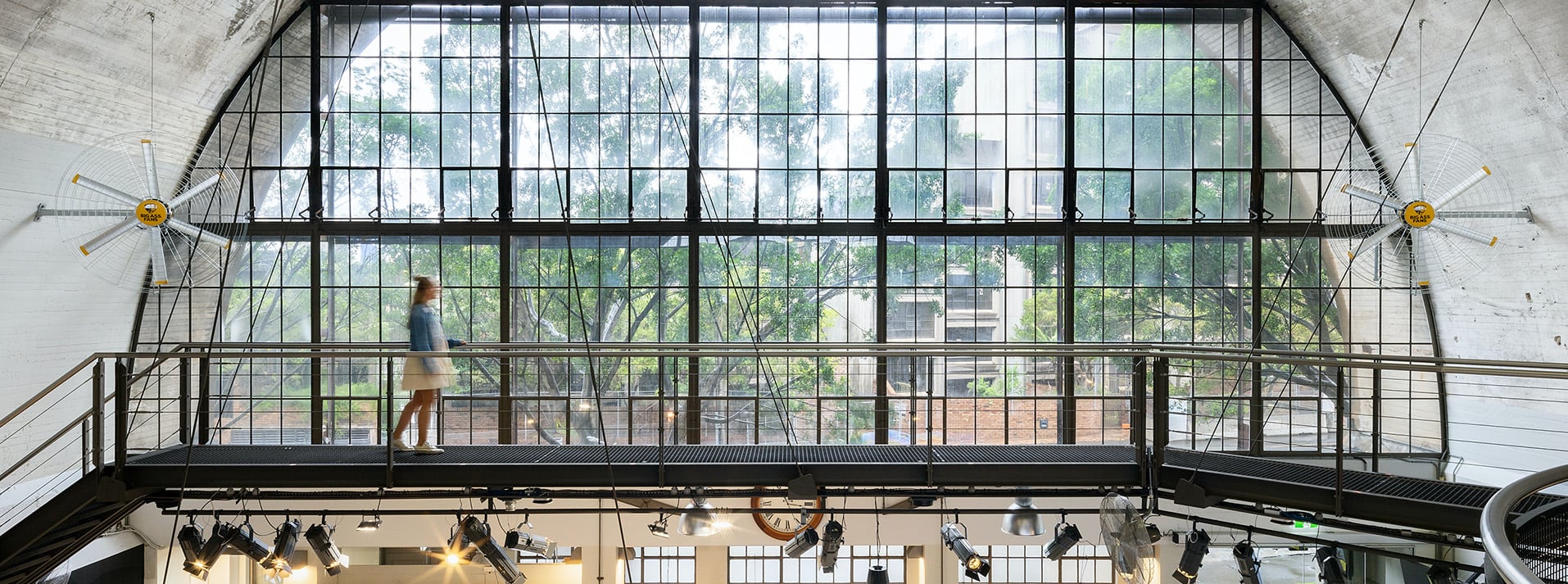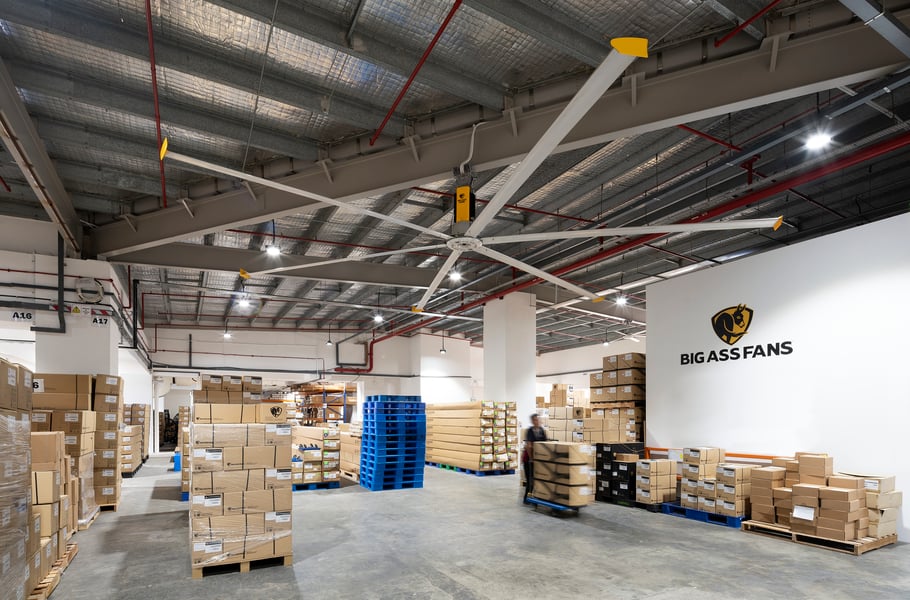
What Sets Fans Apart: Guide to UL 507, AMCA 230 & AMCA 208 Compliance
Fan compliance standards are often misunderstood, even by experienced consultants and specifiers. It’s not uncommon to hear codes such as UL 507, AMCA 230, and AMCA 208 used interchangeably, or to see performance data pulled from one standard while safety compliance is assumed.
But the truth is: each of these standards serves a distinct and crucial role. Whether you're selecting fans for a warehouse, gym, commercial office, or agricultural facility, understanding how these standards work together can make or break your project's safety, performance, and compliance outcomes.
Let’s unpack why these three standards matter, and why only Big Ass Fans deliver across all of them.
Why fan compliance standards matter
When it comes to ceiling and HVLS (high-volume, low-speed) fans, compliance isn’t just a box to tick. It’s the framework that ensures:
- Safety: to protect building occupants and meet code
- Performance: to deliver real, tested airflow
- Efficiency: to meet tightening energy regulations
Yet, in the current market, code confusion is common. Manufacturers may selectively test their products to appear compliant, or worse, rely on internal testing that doesn’t follow any recognised standard. This leaves specifiers vulnerable to risk, from liability exposure to project delays and energy code violations.
To avoid these issues when selecting a fan, you need to understand the three standards that matter most: UL 507, AMCA 230, and AMCA 208.
ul 507: The electrical safety standard
UL 507 focuses on fan electrical safety and is a foundational requirement in North America. It confirms that the fan is built and wired to prevent fire hazards, electrical shocks, and mechanical failures in all expected environments.
What UL 507 Covers
- Electrical safety: Insulation integrity, grounding, and safe wiring practices
- Fire resistance: Flame-retardant materials to reduce fire risk
- Mechanical protection: Secure housings, blade guards, and structural stability
- Water/moisture resistance: Essential for outdoor, damp, or corrosive environments
UL 507 applies to a wide range of fan types, including HVLS fans, pedestal fans, and wall-mounted units.
Why UL 507 Matters
- Satisfies core building code and insurance requirements
- Prevents electrical hazards, fires, or equipment failure
- Signals a baseline of product reliability and safety
The HVLS Context
For HVLS applications, UL 507 certification is non-negotiable, especially in public, industrial, and commercial buildings. Yet some manufacturers skip or downplay this certification in favour of airflow performance alone.
Don’t be fooled. A high-airflow fan is worthless if it poses an electrical risk. UL 507 ensures that form never comes at the expense of safety.
amca 230: measuring fan airflow performance
AMCA 230 is the gold standard for determining how much air a fan actually moves. It was developed by the Air Movement and Control Association (AMCA) to provide a level playing field for measuring fan airflow and efficiency.
What AMCA 230 Covers
AMCA 230 outlines standardised methods for evaluating a fan’s airflow volume, energy consumption, and overall efficiency. It includes defined testing conditions, such as mounting height and chamber setup, to ensure consistency across manufacturers.
The resulting data provides quantifiable values for airflow volume, power consumption, and efficiency metrics. This makes it possible to accurately compare how different fan models perform under the same conditions.
Why AMCA 230 Matters
- Allows accurate product comparisons across brands
- Supports designs optimised for thermal comfort and ventilation goals
- Prevents inflated airflow claims from unverified or in-house testing
Common Confusion
Remember, UL 507 and AMCA 230 are not interchangeable. UL 507 tests safety, while AMCA 230 tests performance. A truly compliant fan needs both to meet code, satisfy clients, and avoid callbacks.
amca 208: fan energy index (efficiency classification)
While UL 507 ensures safety and AMCA 230 ensures airflow, AMCA 208 ensures energy efficiency. It uses the Fan Energy Index (FEI) to evaluate how effectively a fan delivers airflow relative to its energy use.
What AMCA 208 Covers
AMCA outlines how to evaluate and compare fans based on energy consumption relative to airflow, using a baseline established by the Department of Energy. This standard is important for complying with energy codes such as ASHRAE 90.1 and Title 24, and meeting sustainability standards.
Why AMCA 208 Matters
- Helps architects and engineers select fans that meet or exceed energy requirements
- Reduces long-term operating costs for building owners
- Required for projects pursuing green building certifications
Integration with AMCA 214
Manufacturers use AMCA 214 in tandem with 208 to conduct FEI calculations correctly. This ensures that published FEI values are transparent and verifiable.
what makes big ass fans different?
At Big Ass Fans, we don’t believe in half measures. Our HVLS fans are tested and certified to all three standards, including UL 507 for safety, AMCA 230 for airflow performance, and AMCA 208 for energy efficiency.
Most competitors might check one box, or two if you're lucky. But Big Ass Fans is the only major HVLS brand that delivers full-spectrum compliance.
Why does that matter? Our fully-compliant fans allow you to:
- Avoid liability exposure from non-certified safety components
- Gain confidence in real-world performance metrics
- Protect against shifting energy laws and environmental regulations
With laws and legislation evolving quickly, this full compliance is the only way to future-proof your projects.
in summary
When it comes to selecting a HVLS fan for your space, choosing one that meets all compliance codes is important. Remember:
- UL 507 ensures your fan is safe, certified, and building code-ready
- AMCA 230 guarantees tested airflow you can count on
- AMCA 208 delivers energy efficiency that meets regulations now and in future
Most fan manufacturers stop short of full compliance. Big Ass Fans doesn’t. We test and certify to all three standards, giving you peace of mind, performance certainty, and protection from shifting laws and energy codes.
Don’t settle for partial compliance.
Don’t risk safety, efficiency, or performance.
Instead, choose the only HVLS brand that delivers the full compliance package: Big Ass Fans.
Want help selecting a fan that checks every box? Contact our team or explore our certified product range today.

